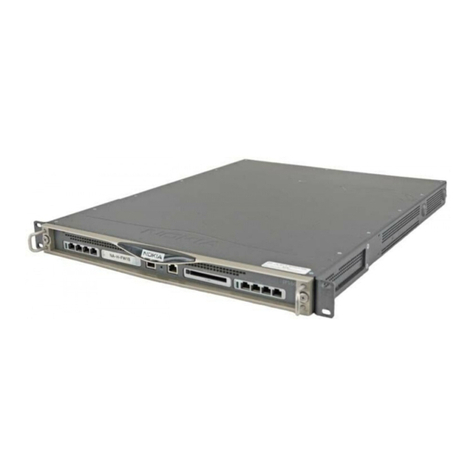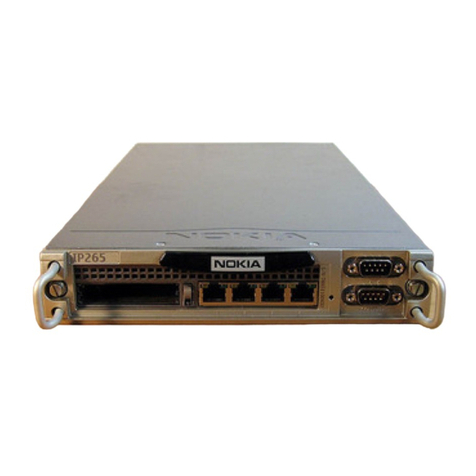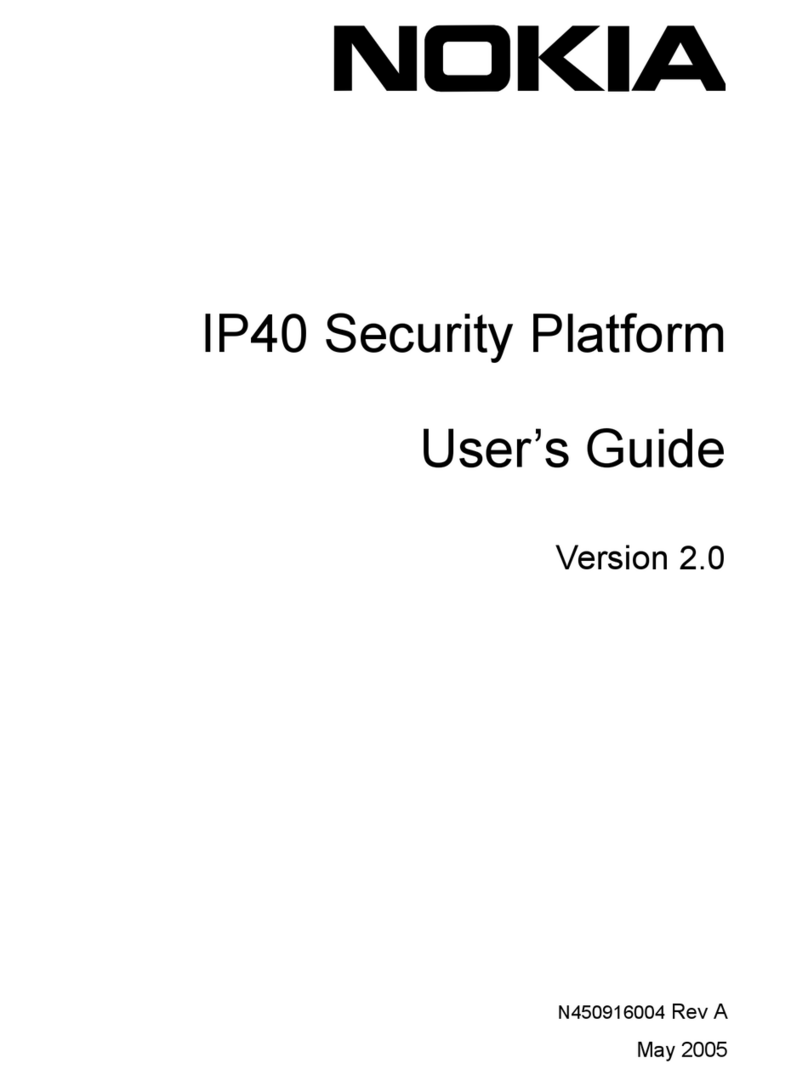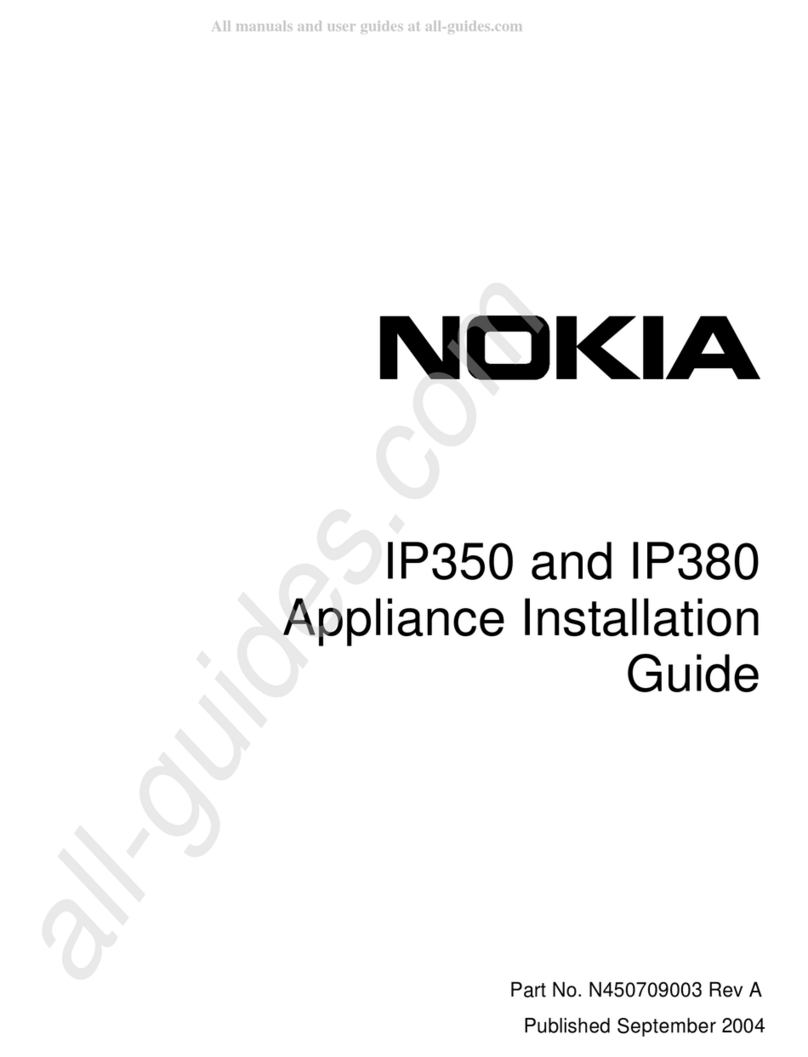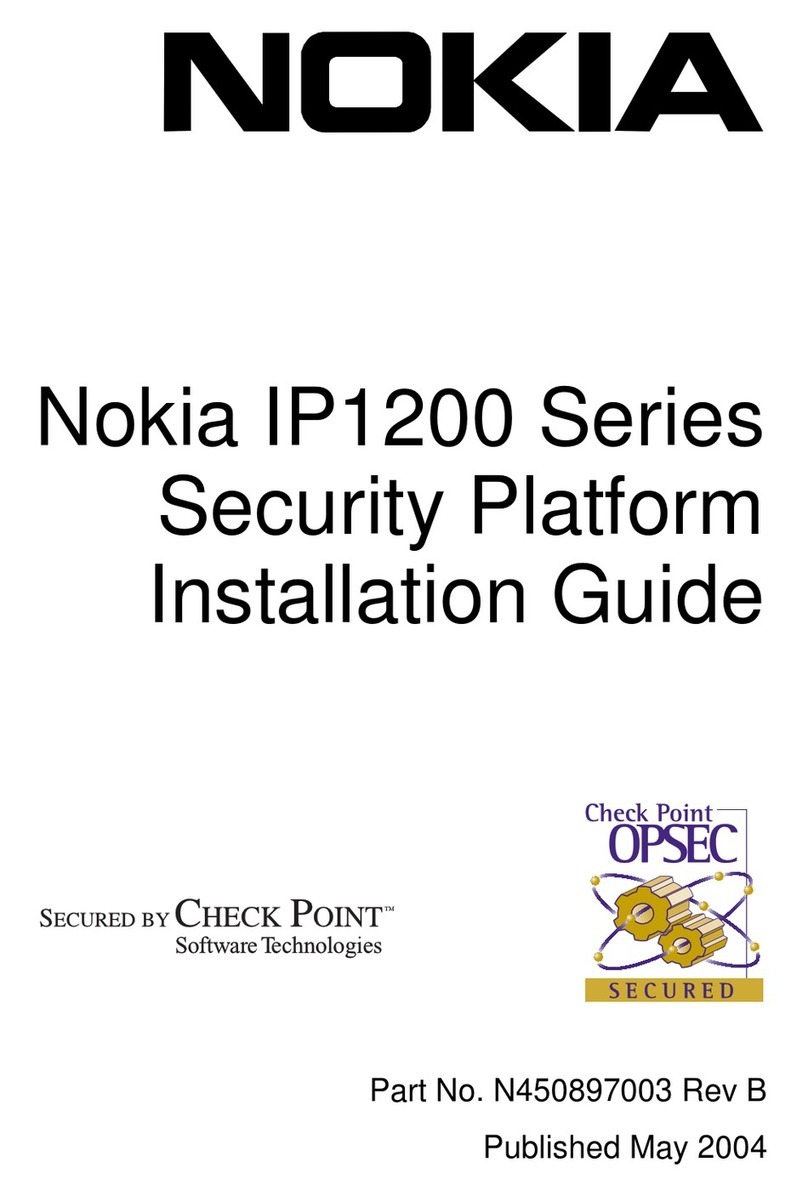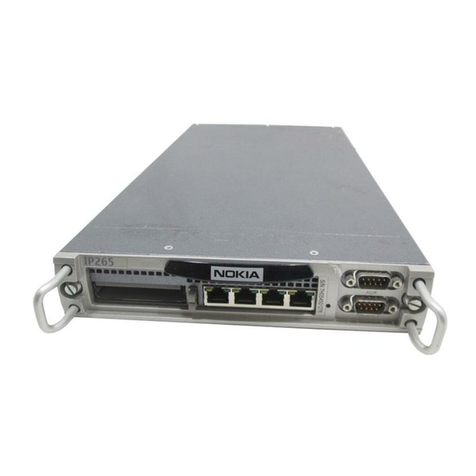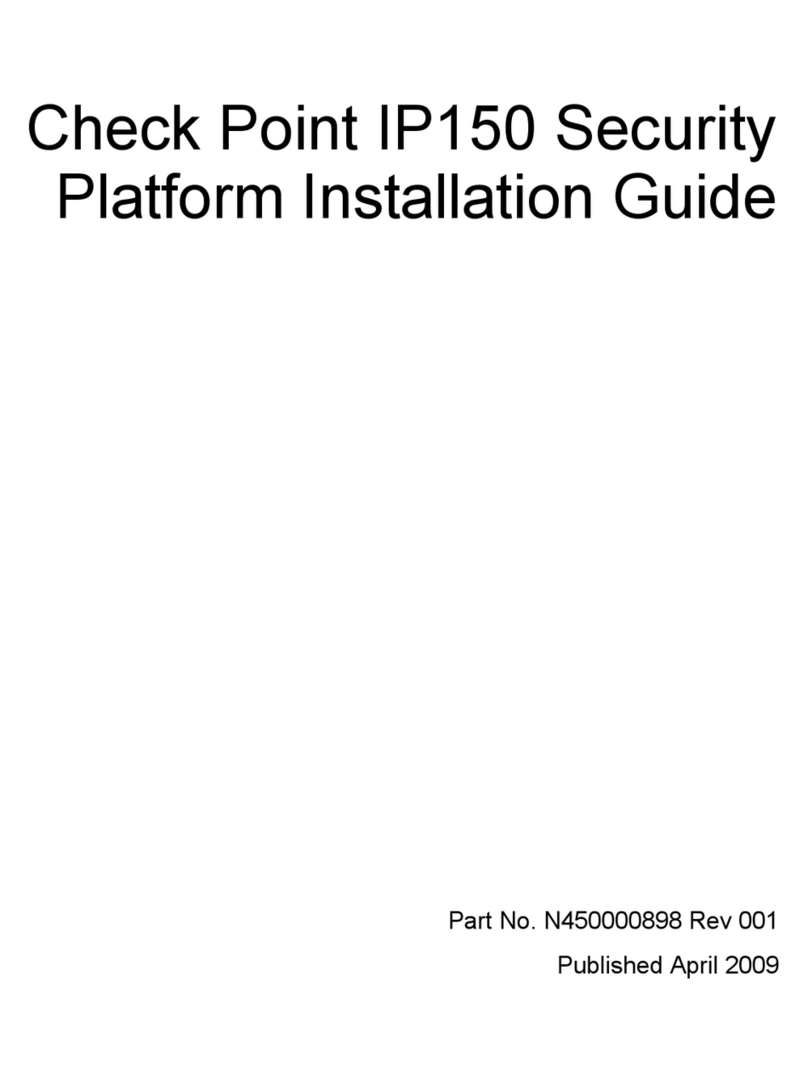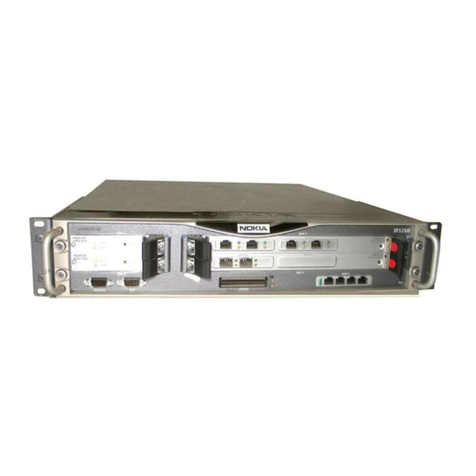6 Nokia IP300 Series Security Platform Installation Guide
3 Performing the Initial Configuration . . . . . . . . . . . . . . . . . . . . . 27
Using a Console Connection to Perform the Initial Configuration . 28
Accessing Nokia Network Voyager . . . . . . . . . . . . . . . . . . . . . . . . 30
Accessing Network Voyager Reference Information. . . . . . . . . . 31
Using Network Voyager to Monitor an IP300 Series Appliance . 32
Using Nokia Horizon Manager. . . . . . . . . . . . . . . . . . . . . . . . . . . . 33
4 Installing and Replacing Network Interface Cards . . . . . . . . . 35
Deactivating Configured Interfaces . . . . . . . . . . . . . . . . . . . . . . . . 36
Removing, Installing, and Replacing NICs. . . . . . . . . . . . . . . . . . . 36
Before You Start . . . . . . . . . . . . . . . . . . . . . . . . . . . . . . . . . . . . . 37
Configuring and Activating Interfaces . . . . . . . . . . . . . . . . . . . . . . 43
Monitoring Network Interface Cards. . . . . . . . . . . . . . . . . . . . . . . . 43
5 Connecting PMC Network Interface Cards . . . . . . . . . . . . . . . . 45
Four-Port and Two-Port 10/100 Mbps Ethernet Interface, PMC . . 46
Ethernet PMC NIC Features . . . . . . . . . . . . . . . . . . . . . . . . . . . . 46
Connectors and Cables. . . . . . . . . . . . . . . . . . . . . . . . . . . . . . . . 47
Two-Port V2 Gigabit Ethernet Card, PMC, Copper . . . . . . . . . . . . 49
Connectors and Cables. . . . . . . . . . . . . . . . . . . . . . . . . . . . . . . . 50
Two-Port Gigabit Ethernet Card, PMC, Fiber. . . . . . . . . . . . . . . . . 52
Connectors and Cables. . . . . . . . . . . . . . . . . . . . . . . . . . . . . . . . 53
6 Installing and Replacing Other Components . . . . . . . . . . . . . . 55
Installing a PCMCIA Modem . . . . . . . . . . . . . . . . . . . . . . . . . . . . . 56
Before You Start . . . . . . . . . . . . . . . . . . . . . . . . . . . . . . . . . . . . . 56
Replacing a Hard-Disk Drive . . . . . . . . . . . . . . . . . . . . . . . . . . . . . 57
Before You Start . . . . . . . . . . . . . . . . . . . . . . . . . . . . . . . . . . . . . 58
Replacing or Upgrading Memory . . . . . . . . . . . . . . . . . . . . . . . . . . 62
Before You Start . . . . . . . . . . . . . . . . . . . . . . . . . . . . . . . . . . . . . 63
Adding or Replacing DIMMs . . . . . . . . . . . . . . . . . . . . . . . . . . . . 64
Installing an Encryption Accelerator Card . . . . . . . . . . . . . . . . . . . 67
Before You Start . . . . . . . . . . . . . . . . . . . . . . . . . . . . . . . . . . . . . 68
